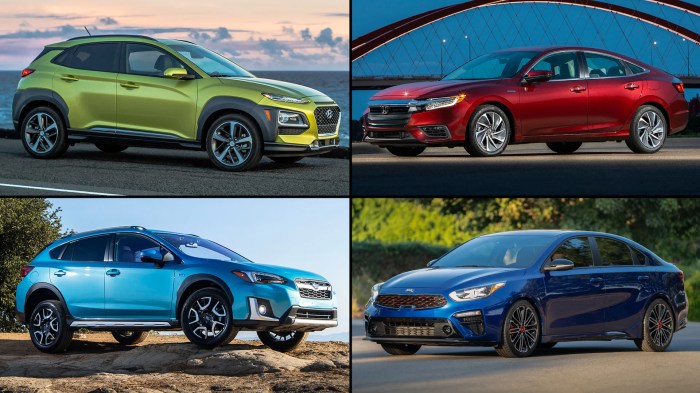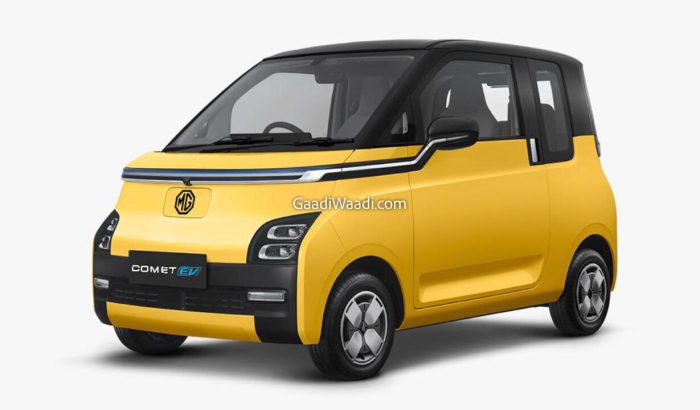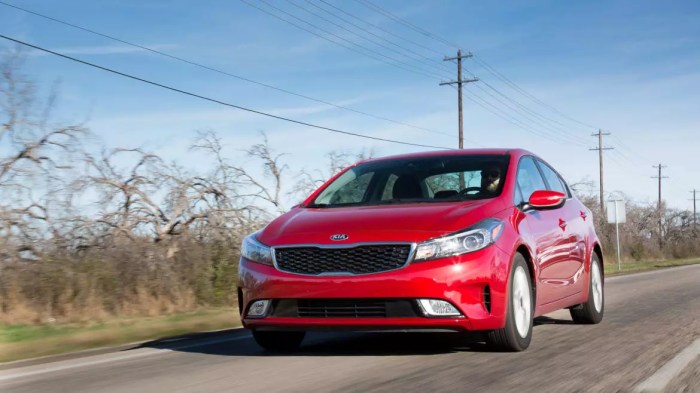Compact cars with great safety features take the spotlight in this informative piece, shedding light on the importance of safety measures in these vehicles and exploring the latest technologies that make them stand out. Dive into the world of compact cars designed for safety and security.
The article delves into the significance of safety features, the advanced technologies incorporated, crash test ratings, and engineering considerations that enhance safety without compromising on other aspects of the vehicle.
Overview of Compact Cars with Great Safety Features

Compact cars with great safety features are highly sought after by consumers looking for a combination of efficiency and protection on the road. These safety features play a crucial role in ensuring the well-being of both drivers and passengers in case of accidents.
Some popular compact cars known for their exceptional safety features include the Honda Civic, Toyota Corolla, Mazda 3, and Volkswagen Golf. These vehicles are equipped with advanced safety technologies such as automatic emergency braking, lane departure warning, adaptive cruise control, and blind-spot monitoring systems.
Importance of Safety Features in Compact Cars, Compact cars with great safety features
Safety features in compact cars are essential for minimizing the risk of injuries in the event of a collision. These features provide an added layer of protection and peace of mind for drivers and passengers, especially in busy urban areas where accidents are more likely to occur.
When planning a family vacation, it’s essential to consider getting family travel insurance with children included to ensure everyone’s safety and well-being. This type of insurance provides coverage for unexpected events that may occur during your trip, giving you peace of mind while traveling with your loved ones.
- Electronic Stability Control (ESC) helps drivers maintain control of the vehicle on slippery roads or during sudden maneuvers.
- Multiple airbags, including side-curtain airbags, provide cushioning in the event of a crash.
- Anti-lock Braking System (ABS) prevents wheels from locking up during emergency braking, reducing the risk of skidding.
Contribution of Safety Features to the Overall Value of Compact Cars
The presence of advanced safety features significantly enhances the overall value of compact cars. Consumers are willing to pay a premium for vehicles that prioritize safety, knowing that they are investing in their well-being and that of their loved ones.
Safety features not only protect lives but also reduce insurance premiums for compact car owners, making them a cost-effective choice in the long run.
Advanced Safety Technologies in Compact Cars: Compact Cars With Great Safety Features
Compact cars with great safety features are equipped with the latest advancements in technology to ensure the safety of both drivers and passengers. These advanced safety technologies set them apart from traditional models and provide an added layer of protection on the road.
For those who enjoy outdoor adventures and need a vehicle for towing trailers, exploring the market for the best pickup trucks for towing trailers is crucial. These trucks are designed to handle the weight and demands of towing, making them a reliable choice for your towing needs.
Automatic Emergency Braking
Automatic emergency braking (AEB) is a feature that helps prevent collisions by automatically applying the brakes when it detects an imminent crash. This technology uses sensors, cameras, and radar to monitor the road ahead and can help reduce the severity of accidents or even prevent them altogether.
Lane-Keeping Assist
Lane-keeping assist is another important safety feature found in many compact cars. This system uses cameras to detect lane markings on the road and helps steer the vehicle back into its lane if it begins to drift. This can help prevent accidents caused by driver distraction or fatigue.
Comparison with Traditional Models
- Compact cars with advanced safety technologies provide an extra layer of protection that traditional models may lack.
- These features can help mitigate the risk of accidents and reduce the severity of collisions, keeping occupants safer on the road.
- By incorporating these advanced safety technologies, compact cars are setting a new standard for safety in the automotive industry.
Crash Test Ratings and Safety Certifications

When it comes to compact cars, crash test ratings and safety certifications play a crucial role in determining the level of safety they offer to occupants. These ratings and certifications provide valuable information to consumers, helping them make informed decisions when choosing a compact car.
Significance of Crash Test Ratings
- Crash test ratings, such as those conducted by organizations like the National Highway Traffic Safety Administration (NHTSA) and the Insurance Institute for Highway Safety (IIHS), evaluate a vehicle’s performance in various crash scenarios.
- These ratings assess factors like occupant protection, crash avoidance capabilities, and overall structural integrity, giving consumers an indication of how well a compact car will perform in a collision.
- Higher crash test ratings typically indicate a safer vehicle with advanced safety features and structural design.
Common Safety Certifications
- Common safety certifications for compact cars include the NHTSA 5-Star Safety Ratings and the IIHS Top Safety Pick or Top Safety Pick+ awards.
- The NHTSA 5-Star Safety Ratings provide an overall rating based on frontal crash, side crash, and rollover tests, giving consumers a comprehensive view of a vehicle’s safety performance.
- The IIHS Top Safety Pick or Top Safety Pick+ awards recognize vehicles that excel in crashworthiness and crash avoidance, highlighting models with superior safety features.
Influence on Consumer Decisions
- Safety ratings significantly influence consumer decisions when purchasing compact cars, as buyers prioritize the safety of themselves and their passengers.
- Positive crash test ratings and safety certifications can serve as a competitive advantage for automakers, attracting safety-conscious consumers to their compact car models.
- Consumers are more likely to choose compact cars with high safety ratings and certifications, knowing that these vehicles have undergone rigorous testing to ensure their protection in the event of a crash.
Design and Engineering for Enhanced Safety

When it comes to compact cars, design and engineering play a crucial role in enhancing safety features. Manufacturers invest significant resources into developing innovative solutions that prioritize the safety of drivers and passengers.
Impact of Design on Safety
The design of compact cars directly impacts their safety features. Features such as a reinforced safety cage, crumple zones, and strategically placed airbags are all outcomes of meticulous design considerations. These elements work together to protect occupants in the event of a collision.
Engineering Considerations for Safety
- Structural Integrity: Engineers focus on ensuring the structural integrity of compact cars to withstand impact forces. This involves using high-strength materials and innovative construction techniques.
- Advanced Driver Assistance Systems (ADAS): Engineering advancements have led to the integration of ADAS in compact cars, offering features like lane departure warning, automatic emergency braking, and adaptive cruise control to enhance safety.
- Crash Test Simulations: Engineers conduct extensive crash test simulations to identify potential weaknesses in a car’s design and make necessary improvements to enhance safety performance.
Manufacturer Prioritization of Safety
Manufacturers prioritize safety without compromising on other aspects of the vehicle by conducting rigorous testing and adhering to strict safety standards. They understand that safety is paramount and strive to continually improve and innovate in this area.
Epilogue
In conclusion, compact cars with great safety features offer a blend of innovation and protection, setting new standards for safety on the roads. With a focus on advanced technologies and design elements, these vehicles provide peace of mind for drivers and passengers alike.